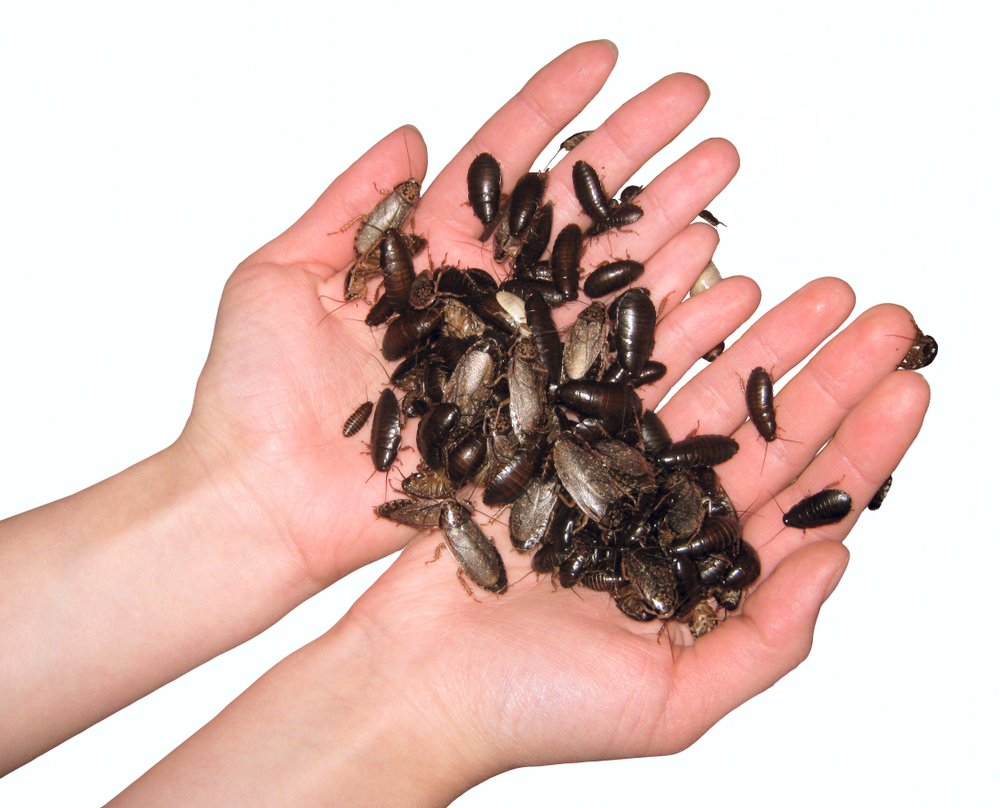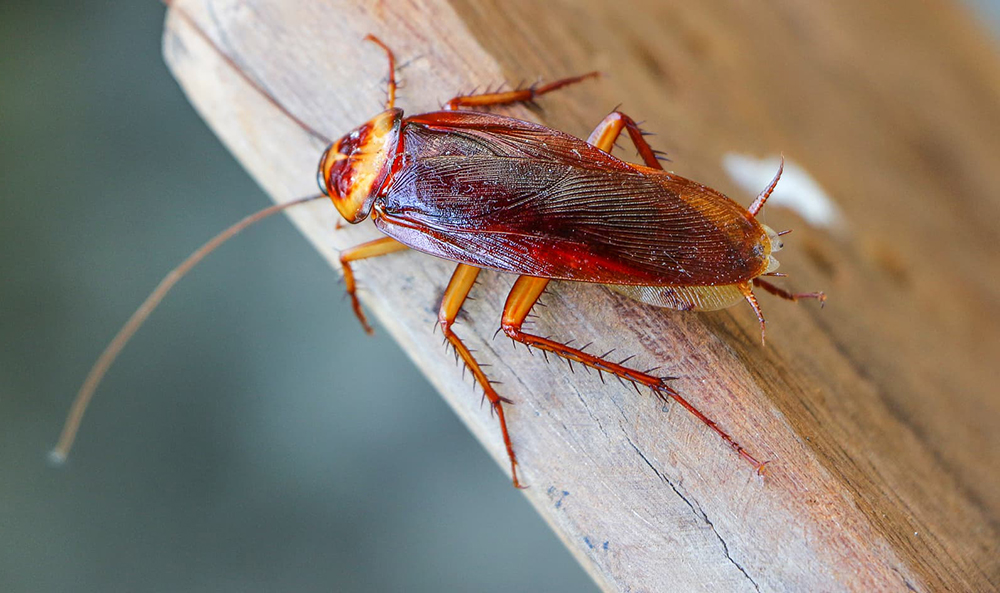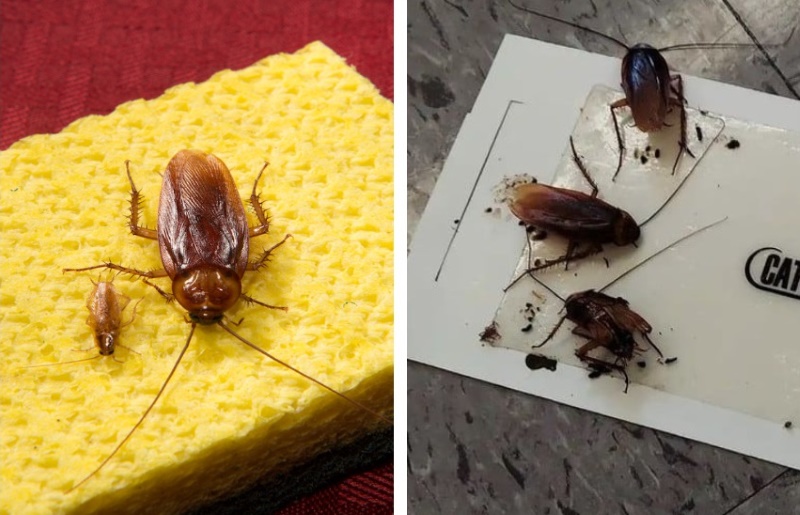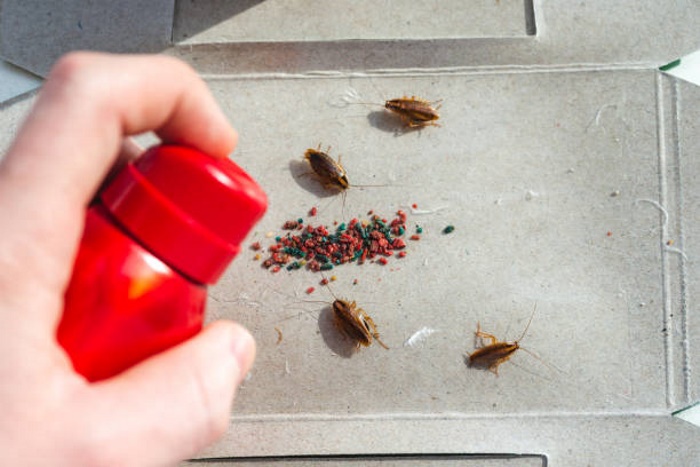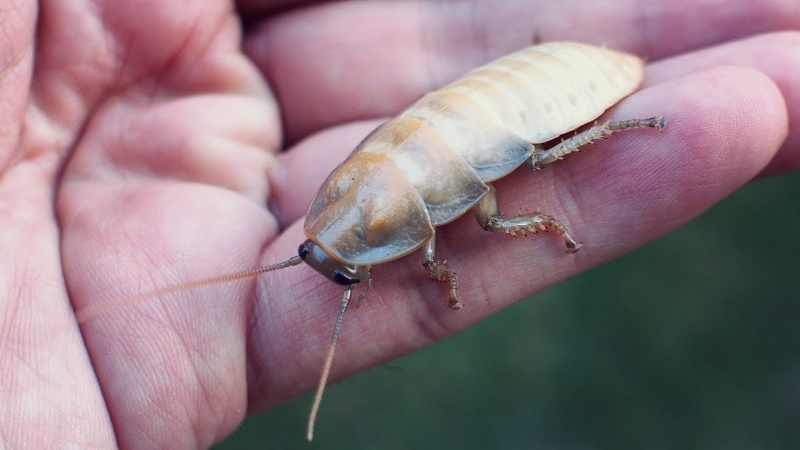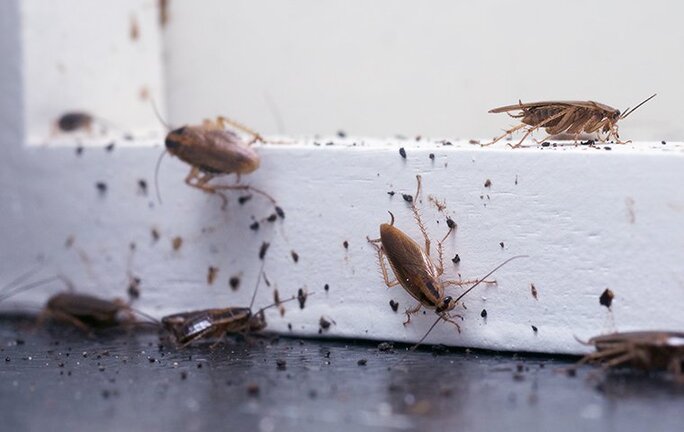

There are many different species of insects and, on a relatively smaller scale, the same could be said for cockroaches. There are currently some 4,500 species Trusted Source How Many Species of Cockroaches Plague Humanity? | Smart News | Smithsonian Magazine Cockroaches are one of the most successful species on the planet. They are also one of the most hardy and one of the most common pests. Cockroaches first landed in the Americas from Africa as early as 1625, but the invasion is far from over. www.smithsonianmag.com of these disgustingly troublesome bugs around, and unfortunately, the presence of one usually means the presence of others.
However, what would it mean when you find baby roaches in your home instead? It would mean mostly the same. Roaches are vectors for diseases, and any surface they come into contact with should be cleaned to prevent the potential spread of diseases.
You are very likely to come across these bugs because they are attracted to the moist and humid environments offered by toilets and kitchens. So, while dirtiness might encourage their presence, they are still likely t turn up in clean homes as well. Thanks to the sheer number and variation of the species in existence, not just any insecticide or pesticide would work, but here is a rundown of what to do if you find any of them in your home.
Many might associate cute with the word ‘baby, but there’s nothing cute about a baby roach. If anything, they signal potentially dangerous new habitats in a home, and they should be eliminated immediately. However, the process of elimination is not always so straightforward, thanks to the fact that a full-blown infestation might already have occurred. There’s no reason to be confused, though; we’ve got you covered. The following processes shed some light on how to deal with baby roaches.
The first step to tackling any situation is to assess the consequences of the situation unfolding and what you stand to lose as a result of inaction. The first thing to note here (and the most important) is that roaches represent a danger to health.
On their forays through some disgusting places, they pick up a lot of dangerous organisms like bacteria and fungi, which they then leave behind as they tour your home. As such, a roach running through your kitchen indicates the presence of microorganisms. When they eat your food or crawl over them, the consequences are even more harmful. In such an event, having to spray your food would lead to losses.
Their activities as a vector, however, are not the end of their health risk, and they have been indicated as being capable of triggering asthma attacks due to airborne droppings. If you want another reason to avoid inactivity, consider that they are an eyesore and a potential embarrassment.
Most importantly, though, the presence of a baby roach means that there are most likely lots of baby roaches crawling around, hidden from sight. If you know anything about reproduction in cockroaches Trusted Source How Cockroaches Work | HowStuffWorks There are plenty of reasons to dislike cockroaches. Their flattened bodies, leathery wings, skittering legs and long, waving antennae give some people the creeps. Because roaches eat garbage and waste, they can spread bacteria like Salmonella and Shigella from place to place. As they walk, they leave trails of fecal matter, which they use to find their way around. On top of being gross, these trails can cause stains and odors. The proteins in cockroach saliva and waste can also cause allergies and aggravate asthma. animals.howstuffworks.com , you’d understand the implication of their presence. A little knowledge of cockroaches, the damage they can cause, and how they multiply makes them scarier, but it would help better prepare you to deal with them.
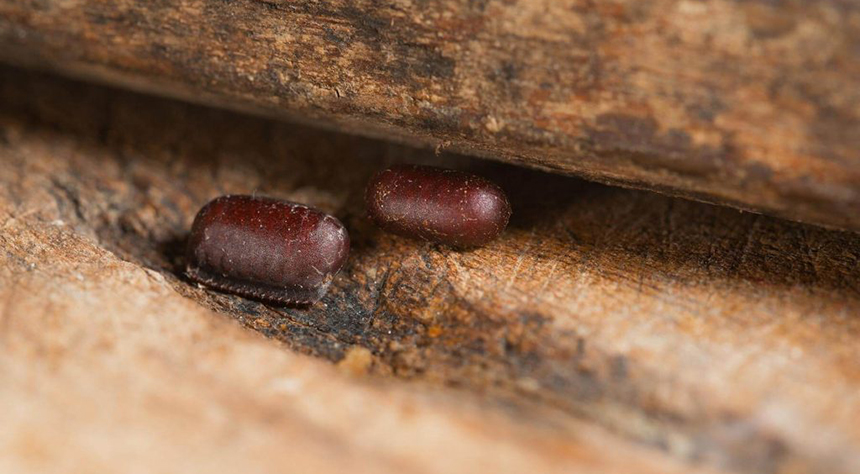
As we stated, there are a lot of insects and bugs around and even among the species of roaches, and there are a variety of colors, sizes, and shapes to consider. It is for this reason that size alone can’t differentiate bugs from one another. For instance, the size of a bed bug may help differentiate it from a German cockroach, but the cockroach is of similar sizes and looks to some beetles. If your pest problem turns out to be a bed bug, bed bug powders are a viable solution.
Lack of proper identification of the bug is a problem because not all insecticides or pesticides are active against all bugs, and there might be inactivity even within the species of a bug; German roach killers might not be active against all other species of roaches.
Beyond simply identifying the cockroaches alone, you can look out for signs of a roach infestation by watching out for their egg capsules. These are usually in the shape of a kidney bean. If you find any, you should destroy the capsules and utilize bait to confirm the presence of cockroaches.
In summary, knowing your roach and its particular species before preparing for war would help your chances of total elimination. If it’s too hard, you could enlist the services of an insect specialist or professional pest management expert.
If you already know the consequences of a roach infestation and have successfully identified the particular pest plaguing your kitchens and bathrooms, the next step is to begin an elimination campaign.
Whatever method of extermination that is used should be safe for humans, the environment and should be effective enough not to require frequent need. It is advised, though, that extermination of these pests is not treated as an isolated process. Rather, it is better to carry it out along with other sanitary and preventive practices.
What this means is instead of just killing the roaches, it’s better to employ a campaign that makes your home less attractive to them and prevents them from entering at all.
There are a lot of available myths and narratives about roaches that influence how people perceive them. A wrong perception could further influence how the exterminating process would go. Therefore, why don’t we tackle some of these myths and sort through right and wrong about them?
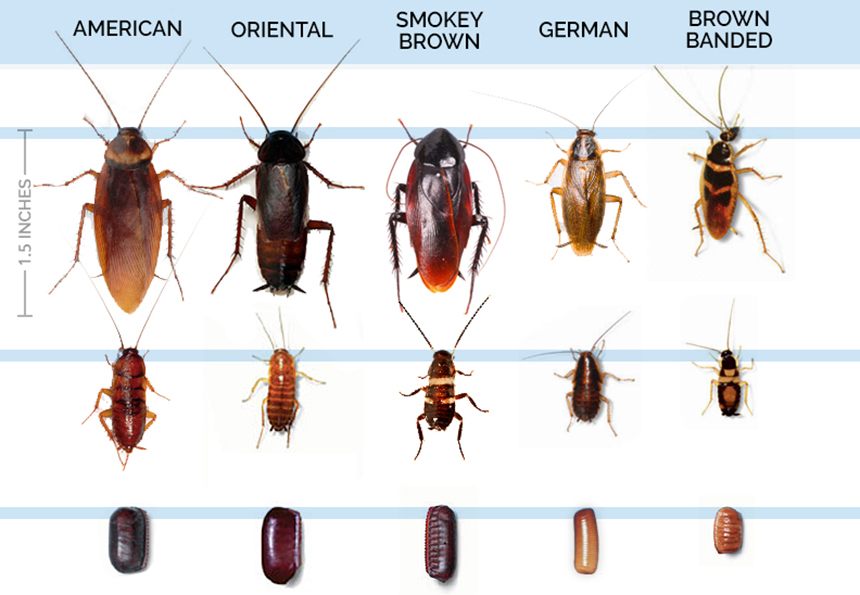
It is a common idea among many people that bigger cockroaches equal bigger problems, but that is false. For starters, not all species of cockroaches are the same size, and some are larger than others are, but this doesn’t affect their ability to track microorganisms into your kitchen.
Secondly, baby roaches are equally capable of doing the same things as the bigger roaches, and you would do well not to look down on them. They might even be more troublesome because they bite more than adults do.
We pointed out earlier those roaches are more in search of a warm, moist, and humid environment that supports their growth than they are attracted to dirt. The presence of readily available food also plays a role in whether they would be present or not.
Hence, while the chaos of a dirty home is preferable to roaches because it provides the dark nooks and food lying around to satisfy, in the absence of such an environment, they would invade a clean home that offers them the needed moisture and food. Simply put, cleanliness does not preclude a roach infestation.
However, this doesn’t mean that cleanliness is not an important part of preventing a cockroach invasion, as a clean and organized home goes a long way towards dissuading an infestation Trusted Source Cockroaches | UMN Extension Cockroaches can be major pests in restaurants, hospitals, warehouses, offices and buildings with food-handling areas. They secrete a substance which can stain surfaces and produce bad odors. They can also destroy fabric and paper products. extension.umn.edu .
No natural living organism is invincible; even genetically modified organisms are not. The same goes for cockroaches, and the myth that paints them as such is false. What this means is that they can be killed.
There is the age-old physical method of simply crushing them beneath your feet though this leaves a more disgusting mess. If you’re too squeamish for that, the alternative is to employ a chemical agent. Many insecticides are capable of doing this, and roach bombs are a very popular choice among homeowners. The one thing to remember though is, no matter how big or dark the roach is, it’s killable, and you can rid your home of them regardless of their number.
We have touched on some ways to make roaches disappear from your home, and we will be diving into the two most common general approaches. Both of these approaches are preferably combined in most homes for more guaranteed success.
While simple cleanliness might not preclude the entry of these bugs into your home, it can work along with other actions or philosophies to help make your living space as unattractive as possible to them.
The first thing to note is that cleanliness should extend beyond just wiping the floors and shelves. It should include the absence of dirty dishes, prompt packing, and washing of dirty dishes, along with the vacuuming of stray crumbs of food.
It would help your cause if you tried to prevent water buildup in closed and dark spaces. This buildup could be resulting from leaky taps and faucets, and this may need some fixing. Even in the absence of any water buildup or faulty plumbing, you should eliminate all nooks that could help hide roaches.
Sanitation should go beyond eliminating them, though, and you should consider potential routes through which they might be entering. If, during such a consideration/search, you discover any holes or cracks they might be taking advantage of, cover them. All of these measures should be used alongside a more reactive extermination procedure. Some other precautions could include:
If you have carried out complete sanitation that is free of gaps and loopholes, there is nowhere for the roaches to hide anymore, and it’s time to get them. You could hire an exterminator to help with the process or handle it yourself. There are advantages to both processes.
If you are going to be carrying out the extermination yourself, some education on bugs might come in handy. You would also need to assess the extent of the damage and infestation by yourself while studying the safest and most effective way to handle your much smaller, less lovely housemates.
When it comes to insecticides, the two available broad types are the IGRs (Insect Growth Regulators), which would inhibit growth and is effective against nymphs. The second group consists of the more common insecticides. These insecticides contain various active ingredients, and you should read up on the safety of each before making a decision.
Insecticides are further grouped into those that prevent reproduction (such as the Bengal Roach Killer) or those that straight up kill, like the Demon Max Insecticide that contains Cypermethrin. Environmental safety should be factored into your decision-making as well when selecting an insecticide.
Exterminating the roaches yourself using any method would give you experience in dealing with them, and you could call on that any time you need it. On the other hand, hiring an exterminator is more convenient if you don’t have the time to devote to the process or if you are too soft for the procedure. It also helps the hiring exterminators that these professionals bring specialized knowledge and a lot of experience to the roach-fighting practice. We recommend that you go for professional exterminators if you suspect you have a roach problem.
How many baby roaches do roaches have at one time?
Too many. While there is no specific answer owing to the vast number of species and the physiological variations among these species, we can say that they produce too many babies. To give an idea, the babies could be as few as 16 (as seen in American and Oriental Cockroaches) or as many as 50 (as seen in the German roaches). It is also not uncommon for female roaches to reproduce without a mate, making it even easier to produce baby roaches.
How many babies can a cockroach have over a lifetime?
The main determinant of this number would be how many the roach can have at a time, the incubation period, and the life span of the roach. All of these vary from species to species, and the fact that the females generally live longer than the males means more baby roaches.
The female German roaches have an incubation rate of 28 days and can reproduce about five times during their life span (less than 200 days). The female American cockroach has a life span of about 700 days and can reproduce about 6 to 14 times before they die. Finally, the female Oriental roaches have lifespans of 180 days and reproduce 8 times. That would mean minimums of about 200, 96, and 128 babies if the respective female cockroaches experience a full life.
Can they fly?
Some species of cockroaches are capable of flying, but this is only when they reach adulthood. However, the presence of wings doesn’t necessarily mean the ability to fly, and many of the roaches that have wings do not fly well or at all. That said, some roaches fly well. It should be noted that baby roaches aren’t born with wings and, as such, cannot fly due to a complete lack of wings or underdeveloped wings.
Can they jump?
No, they can’t jump. That’s the simple answer, and though the weak flight could be referred to as a jump, it isn’t because they are not built for such motion. Why would they need to? They are already fast enough, just scuttling about.
Do they bite?
They are generally capable of it, but they rarely do so because close contact and proximity to humans are dangerous for their continued living. Baby roaches can bite as well, and they do so sometimes but not very often.
It has been established that cockroaches represent a danger to our health and the safety of our homes; however, making these pests disappear completely might be more difficult than you think. To achieve this complete elimination, constant vigilance is necessary.
An even bigger problem will be if a baby roach is spotted. The presence of one of these could, and most likely, means that an adult roach has decided to put its impressive reproductive abilities to use in your home. In such a case, your home is already populated by a horde of baby roaches.
No need to worry though, the knowledge and measures shared in this article should get you on your way to a roach-free home whether you choose to do it yourself or with the help of a professional.
